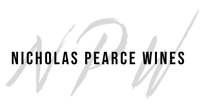For those of us who would like a white wine to match the spring weather outside!
Delivery timeline:
It requires four full cases of each wine in order for us to build and fulfill four mixed cases. This process usually takes about 7-10 business days but may vary.
Each case includes three bottles of the following wines:
3 bottles x The Flower and The Bee Treixadura D.O. Ribeiro 2021 (Galicia, Spain)White | Treixadura
90 points - Wine Align
This wine is the starting point to understand and appreciate the complexity of the Galician terroir and its native grape varieties. Deliciously easy-drinking, Coto de Gomariz has wanted The Flower and the Bee to be enjoyed unapologetically!
The wines of Ribeiro aren’t seen quite as often in export markets as wines from other Spanish regions. It is located along the northern banks of the Miño River, just to the east of Rías Baixas’ Condado do Tea. While Ribeiro has an Atlantic influence, it is slightly warmer than Rías Baixas. The Treixadura-dominant white wines are Ribeiro’s specialty, characterized by fullness and zippy acidity.
Powerful flavours of herbs, pears and white peach, with some apricot and spice notes. Real presence, but not at all heavy. Just lovely fruit intensity, and amazing freshness.
Pairing suggestion: Enjoy on its own, or pair it with Spanish tapas and seafood dishes.
3 bottles x 2021 Markus Altenburger Chardonnay Vom Kalk (Burgenland, Austria)
White | Chardonnay
The Altenburger family has farmed land in and around Jois since the 16th century. Their vineyards are only half an hour from Vienna, but seemingly in another cosmos altogether.
Grown on calcareous loam, the The Chardonnay vom Kalk is the counterpart to Blaufränkisch vom Kalk – which is Altenburger's most famous wine. Markus lets the vines do their work in the vineyards and the wine do its thing at the winery. The result is therefore honest: natural wines that translate the terroir and the cool climate aspect through and through. In a visit to the winery in May, 2022, Markus confirmed that 2021 had been an exceptional year for his white wines.
For this wine, half of the fruit gets pressed directly, while the other half macerates on the skins for two days. This skin contact maceration adds a lot of texture and character to the wine. 50% of the juice ferments in concrete eggs, and 50% in big oak casks.
Pale gold colour, with a stony, chalky nose and aromas of fresh peaches. On the palate, fine aromas of exotic fruits such as tangerine and meyer lemon bloom, accompanied by a salty minerality. It has a dense structure coming from the ageing in concrete and big wooden barrels, with fresh acidity. Long finish.
Pairing suggestion: Enjoy this Chardonnay with with fresh fish or creamy lemony pasta.
3 bottles x Abbia Nòva Senza Vandalismi Bianco Passerina del Frusinate 2021 (Lazio, Italy)
White | Sylvaner
17 points - Jancis Robinson
Located in the town of Pilio, about thirty miles east of Rome, Abbia Nova is a brand-new artisanal winery by cousins Daniele and Pierluca Proietti. The name 'Abbia Nova' refers to an ancient Roman road linking the town of Piglio, in the southwestern part of the region, with Abruzzo.
Listening to our producers' stories about the uniqueness of certain grapes make our hearts beat faster. Abbia Nova is one of those wineries. Their Senza Vandalismi Bianco is made from Passerina, an ancient and traditional grape of the Marche region but also cultivated in the Lazio.
Leaning on the refreshing side of oxidation, on the nose, this young wine boasts intense evolution, leading with apple and pear compote, lemon lime cordial, macadamia nuts and salted almonds. It's full but fresh on the palate, rich with tension and backed by a beautifully balanced acidity.
Pairing suggestion: The perfect wine to have al fresco with vegetarian and fish-based dishes.
3 bottles x Domaine Baud 'Cuvée Flor' Chardonnay Côtes du Jura AOC 2020 (Jura, France)
White | Chardonnay
94 points - Wine Anorak
The Baud estate dates back to 1742. Today, ninth generation vignerons Clementine and Bastien Baud are making some of the best-value wines in Jura. This unique wine region is a narrow valley in the remote hills between Burgundy and Switzerland that was once covered by an ocean millions of years ago. If you kick a stone in a Jura vineyard, it will probably be a fossil!
Controlled oxidation at its finest. A beautiful juxtaposition of vibrant fruits aromas and nutty oxidative flavours. The Domaine Baud 'Cuvée Flor' presents an intense range of flavours, boasting concentrated honeysuckle, ripe apricot, candied meyer lemon, sourdough, honeycomb, and freshly grounded cloves. The wine attacks the palate with mouthwatering acidity, followed by citrus flesh, bruised golden delicious and burned honey, intensely mineral, with a nutty and umami finish.
Pairing suggestion: Pair this wine with comté cheese, cream-based baked fish, seafood, raclette, and poultry.



